How to Meditate for Letting Go of Unnecessary Tension sets the stage for exploring the intricate world of meditation as a tool for stress relief and overall well-being. Delve into the realm of relaxation and mental clarity with this enlightening guide.
Exploring the various aspects of meditation, stress relief, and mindfulness, this guide offers a comprehensive approach to understanding and practicing the art of letting go of unnecessary tension.
Introduction to Meditation for Letting Go of Unnecessary Tension
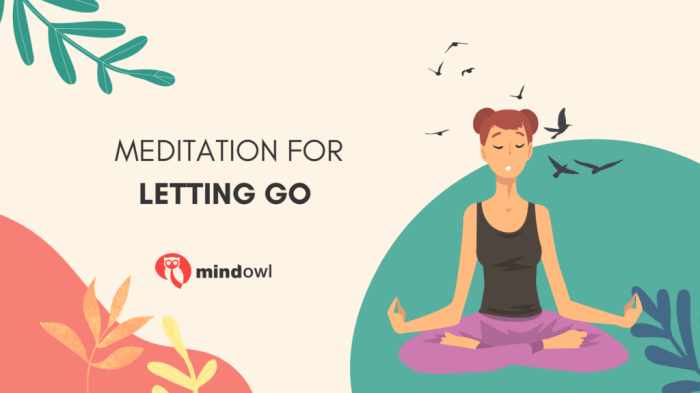
When it comes to releasing tension, meditation can be a powerful tool to help calm the mind and relax the body. By focusing on the present moment and practicing mindfulness, individuals can let go of unnecessary stress and anxiety that may be weighing them down.
Benefits of Using Meditation for Stress Relief
- Meditation helps reduce the production of stress hormones in the body, such as cortisol, which can contribute to feelings of tension and anxiety.
- Regular meditation practice has been shown to improve overall mental well-being and promote a sense of inner peace and tranquility.
- By cultivating a habit of meditation, individuals can develop greater self-awareness and emotional resilience, allowing them to navigate challenging situations with more ease.
Importance of Incorporating Meditation into a Daily Routine
- Consistent meditation practice can lead to long-term benefits for both mental and physical health, making it an essential part of self-care.
- Setting aside dedicated time each day for meditation can help individuals establish a sense of routine and structure, creating a peaceful anchor in their daily lives.
- By making meditation a daily habit, individuals can build a strong foundation for managing stress and enhancing overall well-being, ultimately leading to a more balanced and harmonious life.
Understanding Unnecessary Tension
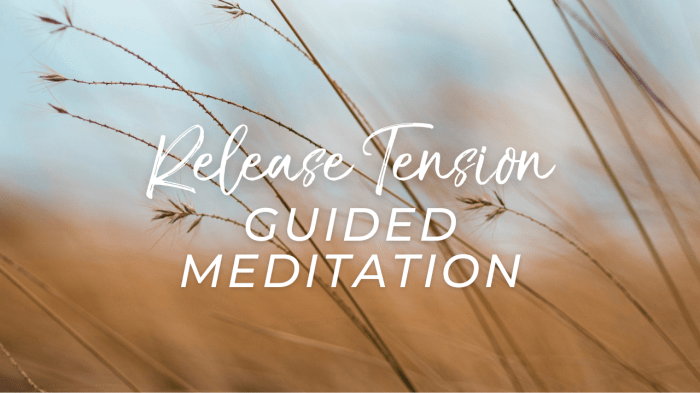
Unnecessary tension refers to the physical and mental strain that individuals experience due to stress, worry, or anxiety that is not essential or beneficial to their well-being. This type of tension can have a detrimental impact on both mental and physical health if not addressed effectively.
Effects of Unnecessary Tension on Health
Unnecessary tension can lead to a variety of health issues, including increased blood pressure, muscle tension, headaches, and digestive problems. It can also contribute to feelings of fatigue, irritability, and difficulty concentrating. Over time, prolonged unnecessary tension can weaken the immune system, making individuals more susceptible to illnesses.
Cultivating a growth mindset through meditation can lead to enhanced personal development and resilience in the face of challenges. By focusing on positive affirmations and self-reflection, individuals can foster a mindset of continuous improvement and learning. Explore How to Meditate for Developing a Growth Mindset to unlock your full potential and embrace growth opportunities.
Examples of Situations Leading to Unnecessary Tension
- Constantly worrying about things that are beyond one’s control
- Perfectionism and setting unrealistic expectations for oneself
- Overthinking past events or anticipating future problems excessively
- Engaging in toxic relationships or environments that cause stress
Impact of Prolonged Tension on Overall Well-being
When unnecessary tension is not addressed or managed effectively, it can significantly impact an individual’s overall well-being. Chronic stress and tension can lead to anxiety disorders, depression, and even physical ailments such as chronic pain or cardiovascular issues. It can also affect relationships, work performance, and quality of life.
When seeking inner strength and balance, meditation plays a crucial role in achieving this state of harmony. By practicing mindfulness and focusing on the present moment, individuals can cultivate a sense of calm and resilience. To learn more about How to Meditate for Achieving Inner Strength and Balance , explore techniques that help in centering the mind and body.
Techniques for Meditating to Release Tension
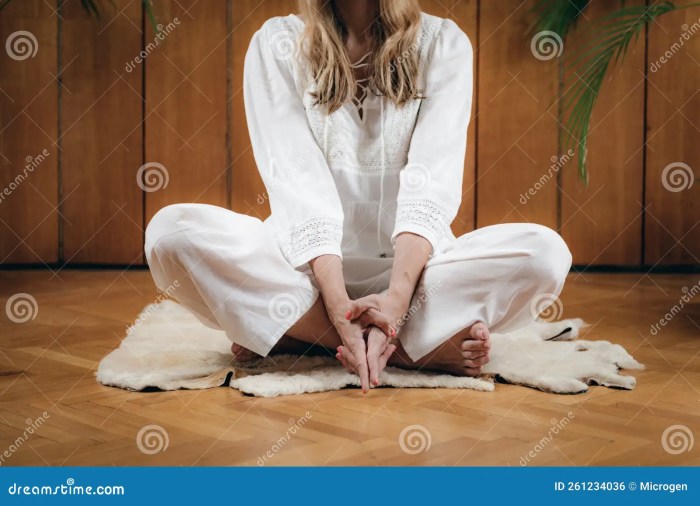
When it comes to releasing unnecessary tension through meditation, there are specific techniques that can help you achieve a state of relaxation and calmness.
For those looking to calm their nervous system, incorporating meditation techniques into daily routines can be beneficial. By engaging in deep breathing exercises and visualization, individuals can reduce stress and anxiety levels. Discover 5 Easy Meditation Techniques to Calm Your Nervous System for a tranquil and peaceful state of mind.
Deep Breathing Exercises, How to Meditate for Letting Go of Unnecessary Tension
Deep breathing exercises are a fundamental aspect of meditation for releasing tension. By focusing on your breath and taking long, deep inhales and exhales, you can activate the body’s relaxation response, reducing stress and tension levels.
When it comes to achieving inner strength and balance, meditation plays a crucial role. By practicing mindfulness and focusing on the present moment, individuals can cultivate a sense of calm and resilience. If you’re looking to develop a growth mindset, meditation can also help you overcome challenges and embrace change. Learn more about How to Meditate for Developing a Growth Mindset through various techniques that promote self-awareness and personal growth.
Visualization Practices
Visualization techniques can be powerful tools for calming the mind and body. By creating a mental image of a peaceful and serene place, you can redirect your focus away from stressors and promote a sense of tranquility. Visualizing yourself letting go of unnecessary tension can help you release physical and emotional stress, bringing about a state of deep relaxation.
Creating a Relaxing Environment for Meditation: How To Meditate For Letting Go Of Unnecessary Tension
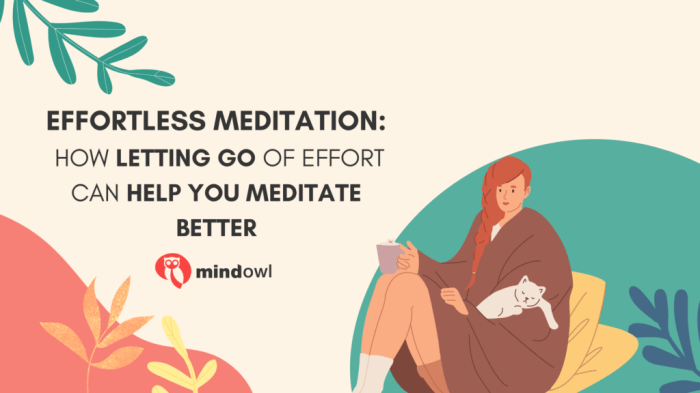
Creating a peaceful and comfortable space for meditation is essential to enhance your practice and experience deeper relaxation. By setting up the right environment, you can create a calming atmosphere that promotes focus and mindfulness.
Tips for Setting Up a Peaceful Space
- Choose a quiet and clutter-free area in your home where you can sit comfortably without distractions.
- Use a cushion or mat to sit on to support your posture and make your meditation session more comfortable.
- Consider adding elements like candles, crystals, or plants to create a serene and inviting space.
Importance of Lighting, Aromatherapy, and Soundscapes
- Soft lighting can help create a relaxing ambiance for meditation. Consider using candles, dimmable lights, or natural light from a window.
- Aromatherapy with essential oils like lavender, chamomile, or frankincense can promote relaxation and reduce stress during meditation.
- Playing calming soundscapes such as nature sounds, instrumental music, or white noise can drown out external distractions and enhance your meditation experience.
Decluttering and Organizing Your Space
- Remove any unnecessary clutter or distractions from your meditation space to create a sense of calm and clarity.
- Organize your meditation area with items that have personal significance or bring you joy to create a positive energy flow.
- Consider incorporating elements of nature such as plants or natural materials to connect with the grounding energy of the earth.
Practicing Mindfulness in Daily Life
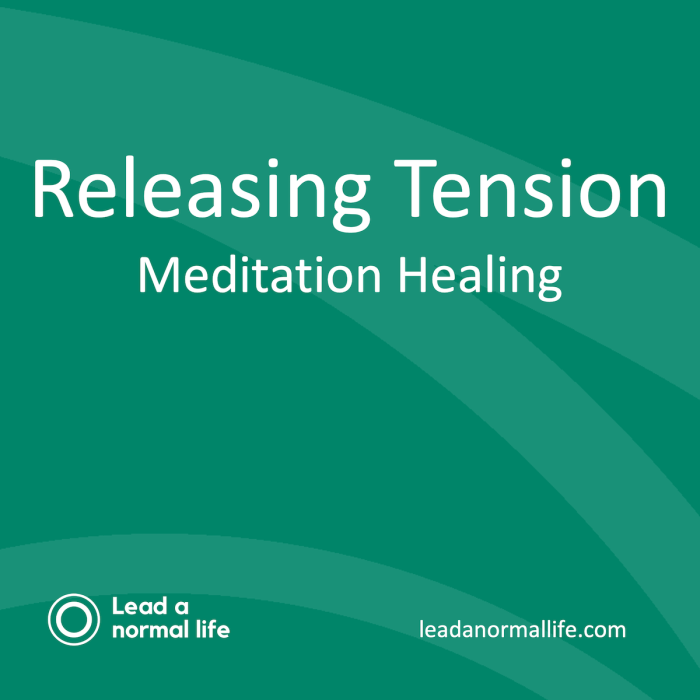
When it comes to letting go of unnecessary tension, incorporating mindfulness practices into your daily life can be a powerful complement to meditation. Mindfulness involves being fully present and aware of your thoughts, feelings, and surroundings without judgment, which can help you cultivate a sense of calm and release stress.
Incorporating Mindfulness into Everyday Activities
- Practice mindful eating by focusing on the flavors, textures, and sensations of each bite without distractions like TV or phones.
- Take mindful walks, paying attention to the sights, sounds, and sensations around you, rather than rushing from one place to another.
- Engage in mindful breathing exercises throughout the day, taking deep breaths and focusing on the sensation of air entering and leaving your body.
- Practice mindfulness in conversations by actively listening to others without thinking about your response or getting lost in your own thoughts.
Role of Mindfulness in Increasing Self-Awareness and Reducing Stress
Mindfulness can help increase self-awareness by allowing you to observe your thoughts and emotions without getting caught up in them. This awareness can help you recognize patterns of tension or stress triggers, enabling you to respond more mindfully and choose healthier coping mechanisms. By reducing stress, mindfulness can also improve your overall well-being and quality of life.
In conclusion, mastering the art of meditation for letting go of unnecessary tension can lead to a more peaceful and balanced life. By incorporating these techniques into your daily routine, you can enhance your overall well-being and cultivate a sense of inner calm.